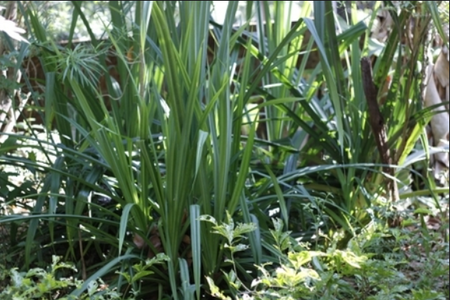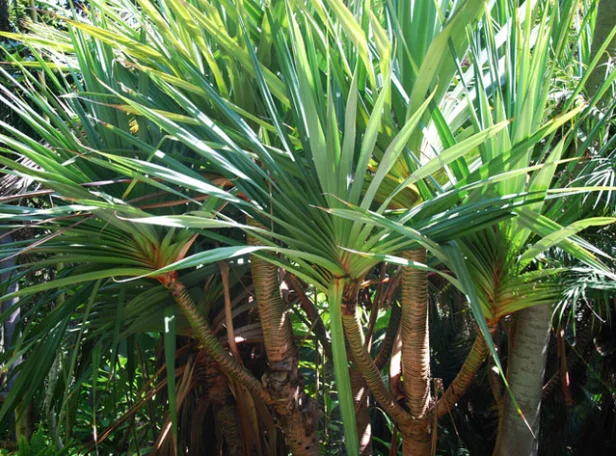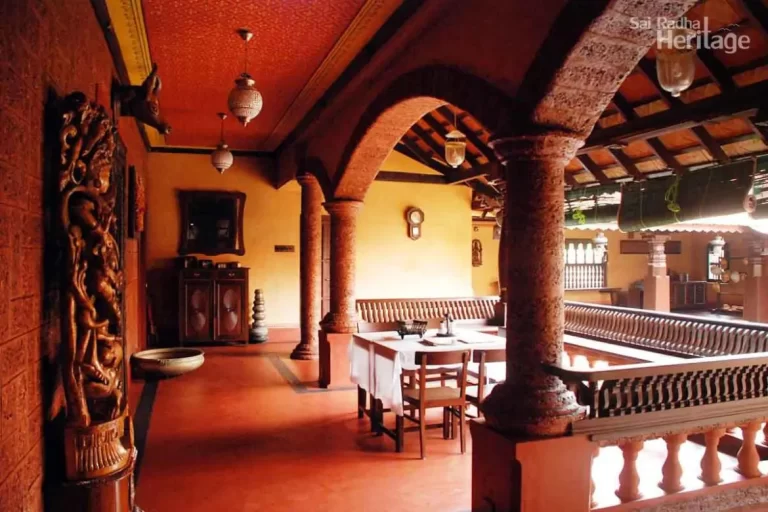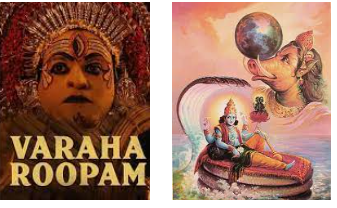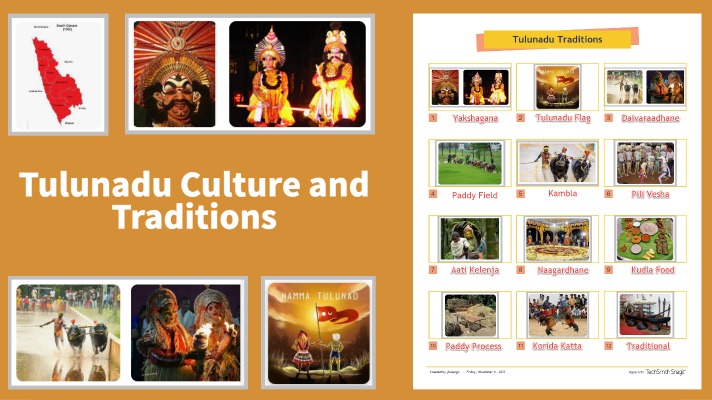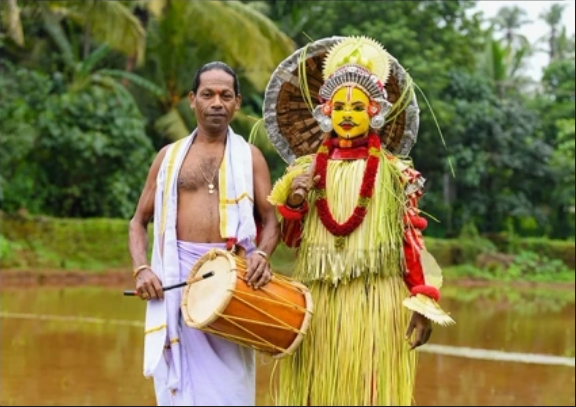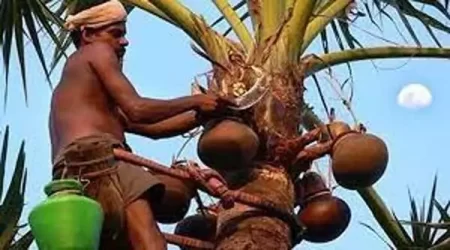Moode Made with Common Screw Pine
Mundevu bush is also known as Common Screw Pine or botanically as Pandanus Utilis. it is a common hedge or spiny bush consisting of long, ribbony leaves with serial spines on the margin of the leaves. These hedges naturally grow in Karavali region or Coasta Karnataka along river sides and beaches, mainly in Mangalore, Udupi and Kasargod districts. It was also common along Tamilnadu coast since early Christian era. It has been mentioned in Sangam literature.
In Tulunadu, the ribbony leaves of Mundev shrub are cut and cleared of their spines and cut into ribbons. The leaves are tendered on low fire and knitted into tubular vessels called Moode(=literally means ‘knitted’ vessel) that are used traditionally to steam cook ground paste of rice and urad dal.
Alternately, the leaves of jack tree are also used in quadruplets to knit and fashion out leafy vessels (‘gunda’ or ‘kotte’) for steam cooking the ground rice-urd paste. Note that both Mundev (Pandanus) and Jack Fruit tree(Pelakai) are very ancient plants. Also note that the Tulu name for the shrub Mundevu includes reference to ‘Munda’ people of Tulunadu. These steam cooked dishes can be considered as precursors of later developed iddlis.
In the beautiful land of Udupi, Mangalore, and in some part of Kasargod plain idlis are made special and fragrant by steaming idli batter in jackfruit leaves, banana leaves, or in pandan/screw pine leaves, turmeric leaves, teak leaves, Macaranga peltata leaves.
Moode are idlis wrapped up like a mystery in screw pine leaves. A delicacy from Udupi, Mangalore and Kasargod or Konkan region. The screw pine leaves/pandan leaves add a distinct taste and aroma to idlis and make them special, unique and delicious.
Screw pine leaves are weaved into cylindrical moulds and are used to steam idli batter. They make cylindrical idlis, which are called as ‘moode’ in Kannada/Tulu. They are made during festivals, a must for Krishnajanmastami festival and are served as breakfast during special occasions and celebrations. It also shows up on tables of most Udupi, Mangalorean homes as breakfast every once in a while. People from Udupi and Mangalore have a flair for these cylindrical idlis.
Moode are versatile, they are traditionally had with butter/ghee/coconut oil on top and with coconut chutney’s, chicken curries, sprouted green gram coconut based curry, a sweet-sour-spicy pineapple curry etc.
The art lies in making these moulds, which is slowly dying. You then steam your normal idli batter in these cylindrical moulds. Steaming is when the magic happens. The screw pine/pandan leaves impart an amazing taste and aroma to the idlis. And that’s when the heavenly smell of steaming moode, fills up your home.
These days people buy moode moulds from roadside vendors in Udupi, Mangalore as making them involves a lot of work. Thanks to our lovely neighbours, the Madhyasta family, who’s mastered the art of making moode moulds, we got some beautiful moulds. Here’s a video of Geetha Madhyasta, our neighbour, teaching me how to weave a moode.
Ole means leaves in Kannada, mundakka in Kannada is the local name of pandan/screw pine plant, hence moode are also called as mundakana ole, oli kadubu in Kannada in Udupi, they are also called as voli moode in Tulu, mundanoli khotto in Konkani.
Traditionally, Pandanus unipapilatus, the screw pine variety having vicious thorns on the spines and sides of the leaves are used to make moode (the cylindrical moulds). The thorns are neatly scaled, the leaves are then withered in an open flame on the ground (these days on the cooking stove) to remove moisture from the leaf. This makes the leaves less brittle and prevent tearing of the leaves. And thus prevents oozing out of the batter from the moulds, later on while steaming. The withered leaves are then weaved into cylindrical moulds. The screw pine leaves are thick enough to be split into 2 and be used to make moode moulds. Each screw pine leaves are long enough to make 2-3 moode’s too.
Natives of Udupi, Mangalore have found a variety of pandan without thorns. These leaves help save time and effort involved in removing the thorns off the screw pine leaves traditionally used (Pandanus unipapilatus). This variety of pandan is called as mundaka in Kannada and also grows easily in backyards unlike the screw pine variety with thorns (Pandanus unipapilatus), which usually grows along side beaches, river banks, ponds of coastal areas. Sorry couldn’t find the species the plant belongs to, as the genus Pandanus has over 750 species of plants, commonly called as screw palms, screw pine, pandan. Leaves of these mundaka plants look similar to any other variety of screw pine leaves, impart similar taste and smell to idlis. The leaves in the images below and the leaves used in the video above are that of mundakka, the variety of pandan without thorns widely available in Udupi.
The plant, leaves look like these
These super long leaves are withered on a cooking stove or in an open flame on the ground and then the leaves are rolled tightly one after the other to keep the long leaves intact in shape untill they are used. These circular rolls made are called as chandrike in Kannada. If the leaves aren’t withered with care then they smell completely of smoke and they may not be very pleasant to eat. The withered leaves tend to change in colour with time. They brown, so use them while they are fresh for an amazing smell and taste. Each moode can hold a lot of idli batter due to it’s elongated shape and 2 moodes can fill your stomach.
Go to Tulu News Page to read more about Tulu Nadu News, Events etc.
Go to Our Partner Website https://mangalorecarrent.com to book

